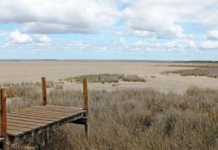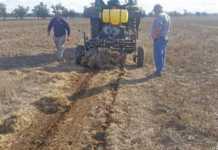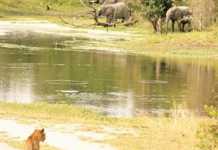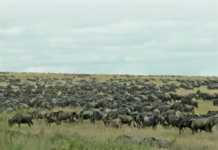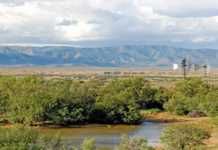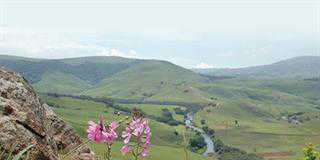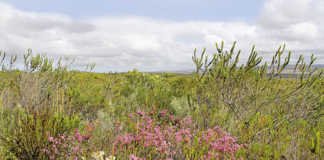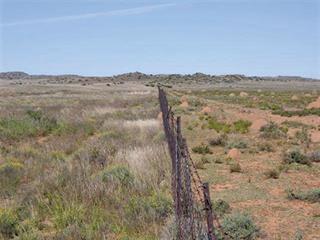
Why do some scientists discredit high-density grazing (HDG) and ultra-high-density grazing (UHDG), saying the claimed benefits lack a factual basis and negatively affect veld?
Inflexible factions arguing for and against HDG and UHDG are divisive. HDG and UHDG are already used in Southern Africa and internationally, and some farmers successfully manage twice the stocking rate advised by scientists and extension officials, to double their grazed grass yield. HDG and UHDG have been factors in the natural veld ecosystem for millions of years.
But these systems are poorly researched, partly because there are no longer great migratory herds of wild game that
can be studied.
Today, livestock and game are rarely stocked and grazed at high densities. The highly variable mix of stocking rates in natural processes makes it almost impossible to establish a research protocol that duplicates the densities, recovery periods, droughts, floods, fires, and long-term effects of HDG/UHDG.
Research has been confined mostly to conventional densities of 2 MLU/ha to 4 MLU/ha. In contrast, HDG practitioners regard 20 MLU/ha as low, while UHDG practitioners regard 300 MLU/ha as low and 800 MLU/ ha and higher as normal.
Game herds can reach densities in excess of 2 000 MLU/ha, especially when trekking or resting. Cost and practical considerations confine research to herds of fewer than 100 animals. This does not compare with the enormous game herds of the past and livestock herd sizes recommended for UHDG systems. Fair trials and comparisons are simply not possible at lower densities and with small herds.
Does the solution lie in getting scientists to work together?
Researchers need to recognise the current confusion around HDG, USDG, herd size, and natural variation. The gold standard for veld management should be the conservation of the basic resource – soil. The hundreds of articles on veld management lack associated information on long-term soil erosion dynamics. Good soil conservation is the result of good cover. Retaining soil is especially critical where the surface is wet and/or steep.
Many grassland scientists are alarmingly ignorant about soil formation and erosion dynamics, and sometimes ignore ongoing soil erosion while defending their research results. The upshot is glaringly obvious in KwaZulu-Natal’s nature conservation areas, especially the Drakensberg. Soil scientists affirm it – grassland scientists deny it.
Trials at Ukulinga, the University of KwaZulu-Natal’s experimental farm near Pietermaritzburg, have for over 60 years been run on plots subjected to a combination of rest, fire and mowing. For decades, the results have been subjected to scientific analysis and used to advise farmers and game wardens. However, these plots have never been subjected to grazing animals.
Much of KwaZulu-Natal’s veld has been classified as regularly fire-dependent.
This is no surprise. Animal impact, different herd sizes, different stocking rates and densities have never been evaluated in these trials. Scientists should revisit and review the past 50 years’ fires, rest and recovery patterns, and stocking rates and densities.
It is not only grassland and soil scientists who should collaborate; vets and animal scientists should also work together. For too long, they have treated and prevented disease to improve production, breeding and supplementary feeding. This has led to an increase in livestock numbers on both wild and managed grasslands, accelerating overgrazing, soil erosion and veld degradation.
Why have farmers been slow in adopting high density veld grazing systems?
The farming mindset that has evolved over time is possibly working against it. Conventional fencing for multi-camp USDG systems is too expensive, while portable electric fencing has only been available for two decades. Other reasons include:
Breeders often favour small single-sire herds so that progeny can be easily identified. This is done with the support of veterinary and animal science support;Crossbreeding splits herds; Watering large herds is a challenge; Smaller, more numerous herds result in grazing at lower densities for longer periods.
Most fenced game reserves are essentially set-stocked without planned recovery periods, unless the area is large enough for natural movement and migration. Innate resistance and problems with parasites and disease have prevented livestock and game from being used together.
Realities have thus shaped the direction that research has taken. The aim should be to holistically improve the distribution and density of palatable forage species, productivity, and veld’s cover and soil conservation, rather than improving one or two factors at the expense of others.
How do you prevent stock from losing condition due to high- density grazing?
Cash is earned from productive and reproductive performance. Too many cattlemen farm with large- framed, quick-growing, supplement-dependent animals that are not suited to some veld types. They should apply principles of animal behaviour to ensure the animals’ rumens are full (propvol) at the end of the day and move them if they are restless and/or their rumens are not full. It is important to educate cattlemen in this regard.
They must also monitor lick content and intake, and initially even spend more on lick if necessary. As veld quantity and quality improves, lick intake can be steadily reduced. Holistic management pioneer Alan Savory’s ideas are sometimes not as holistic as I would like, because at times they ignore animal performance. Animals need as much care as the grass. High to ultra-high stocking densities are perhaps applied too regularly and consistently.
Nature is not only irregular but irregularly irregular with regard to drought, flood, warmth, cold and animal numbers. The answer is diligent long-term research aimed at achieving and maintaining a holistic ecological balance between veld cover, conserved soil, biodiversity and animal health.
Can livestock really mimic the historical grazing habits of game?
The great herds were shot out before grassland ecosystems could be scientifically investigated. Institutional memory was lost, but credible historical references do compensate. They show that in nature, different densities are apparently applied randomly at different times.
Ultra-high densities are followed by low densities, especially when migrating herds leave small numbers of residential grazers behind. Recovery periods range from short, to long, to very long, as can still be seen in the Serengeti and Masaai Mara reserves in Tanzania and Kenya. We can try to mimic that by using our knowledge of grass growth.
What are the basics that need to be considered?
Grass plants depend on regular defoliation to maintain vigour and to photosynthesise when conditions are favourable. Grassland managers must avoid overgrazed and over-rested states and aim for a high proportion of perfectly grazed, carbon-trapping plants with deep root reserves that are always able to photosynthesise.
Getting grassland into a uniform state of photosynthesis requires periodic, severe and catastrophic impact defoliation. Burning and mowing are often favoured techniques. At one time the great herds performed this function, but today it is rare for high livestock or game densities to exert such a catastrophic effect.
Impact must be applied for a short duration – hours rather than weeks. During a fire, a section of veld is usually burnt in a few hours. Similarly, mowing a lawn or hay land takes a few hours. Livestock management rarely allow cattle to graze veld that drastically in a short period of time.
After defoliation, grass should be allowed to adequately recover before the next impact. This means it should have
the opportunity to at least fully restore root reserves and undergo photosynthesis. Too little recovery time means that the grass becomes overgrazed, while over-recovery leads to it becoming over-rested.
Dormant winter veld often shows signs of being over-rested during the growing season, resulting in low value grass species in seed being unable to grow, and therefore being ignored by livestock. Among these over-rested plants, those that have been repeatedly grazed move into the overgrazed category.
Poor productivity and the threat of moribund, overgrazed and over-rested plants require catastrophic rescue. As a management strategy, HDG/UHDG is preferable to mowing or fire in many situations. Yet farmers, game wardens and grassland scientists consistently advocate low animal densities combined with burning as a strategy.
I therefore advocate dedicated research on variable higher grazing densities for shorter periods, varying recovery periods and less use of fire.
Phone Dr Peter Ardington on 083 655 3339, or email him at [email protected].

